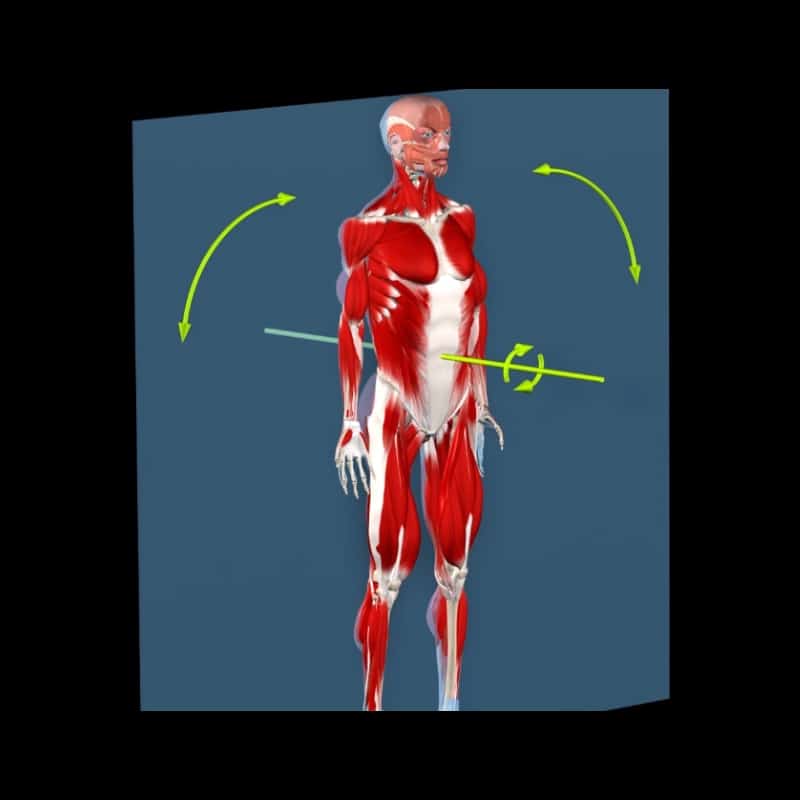Human Anatomy Terminology: A Complete Guide.
This complete Muscle and Motion guide provides the foundations of anatomy terminology and includes 3D illustrations and clear definitions of musculoskeletal practice.
Anatomical terminology is a specialized language used by professionals in anatomy and health, such as doctors, physicians, physiotherapists, and fitness trainers. Anatomical terminology is based on Greek and Latin terms. It is a standardized and universal language for describing the structures and functions of the human body designed to be precise, ensuring there is no room for ambiguity and potential errors. Understanding the fundamentals of anatomy terminology is essential for mastering anatomical concepts.
These foundations include understanding anatomical position, anatomical terminology, planes of motion, and body movement terminology.
Anatomical position
Anatomy requires standardization in order to ensure precision. To this end, anatomists use a standard “map” or “anatomical position” in which the body is viewed as standing upright, with feet parallel and shoulder-width apart, toes pointing forward, and arms held out to the sides with palms facing forward.
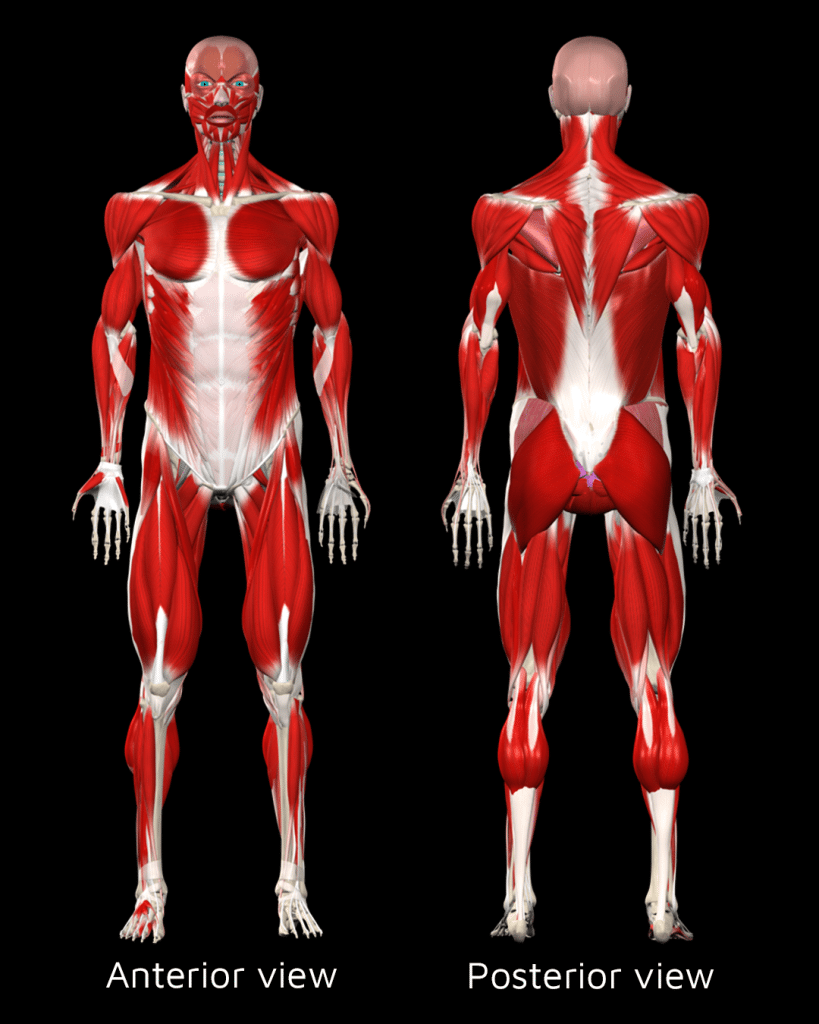
This standard position helps to reduce confusion, and the terminology is applied regardless of the actual orientation of the body. For example, a birthmark on the “anterior (front) carpal (wrist) region” would be located on the palm side of the wrist, even if the hand was positioned palm down on a table.
When a person is lying down, their body can be in either a prone or supine position;
- Prone – describes a face-down orientation
- Supine – describes a face-up orientation
These terms are often used to describe exercise positions. For example, the Prone Triceps Extension or the Supine Hip Flexion exercises.
Directional terms
Directional terms describe the positions of structures relative to other structures or locations in the body. Any directional term also has an opposite directional term; just like since there is a left, there must also be a right.
- Anterior – toward or on the front of the body; for example, the toe is anterior to the ankle.
- Posterior – towards or on the back of the body (behind).
- Superior – towards the head or upper part of a structure (above).
- Inferior – toward the lower part of a structure (below).
- Medial – toward or at the body’s midline (inner side); for example, the pectoralis major is medial to the deltoid.
- Lateral – away from the body’s midline (outer side).
- Proximal – close to the origin of a point of reference; for example, the elbow is proximal to the wrist.
- Distal – far from the origin or point of reference; for example, the wrist is distal to the shoulder.
- Superficial – near the body’s surface; the abdominal sheath is superficial to the iliopsoas muscle.
- Profundus – deep in the body.
Planes of motion
Movements of the human body are typically described in terms of three planes: the frontal plane, the sagittal plane, and the transverse or horizontal plane.
The frontal plane
The frontal plane passes through the body from left to right, dividing the body into anterior and posterior parts. Movements along this plane are lateral (side-to-side) movements, such as:
- Abduction and adduction
- Spine – side flexion
- Foot – inversion and eversion
- Wrist – radial and ulnar deviation
- Scapular – elevation and depression
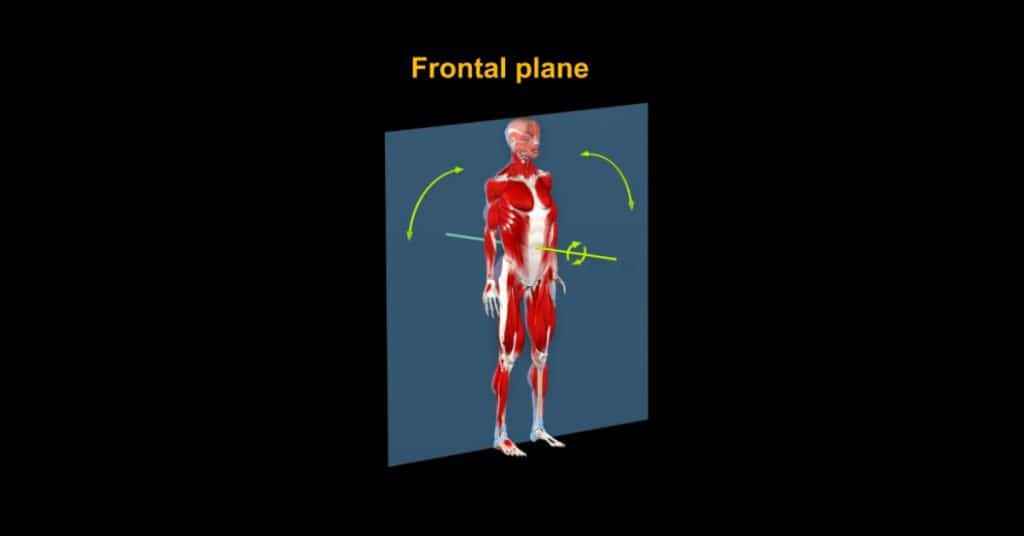
The sagittal plane
The sagittal plane passes through the body from front to back, dividing the body into left and right parts.
Movements along this plane are forward and backward movements, such as:
- Flexion and extension.
- Ankle – dorsiflexion, and plantar flexion.
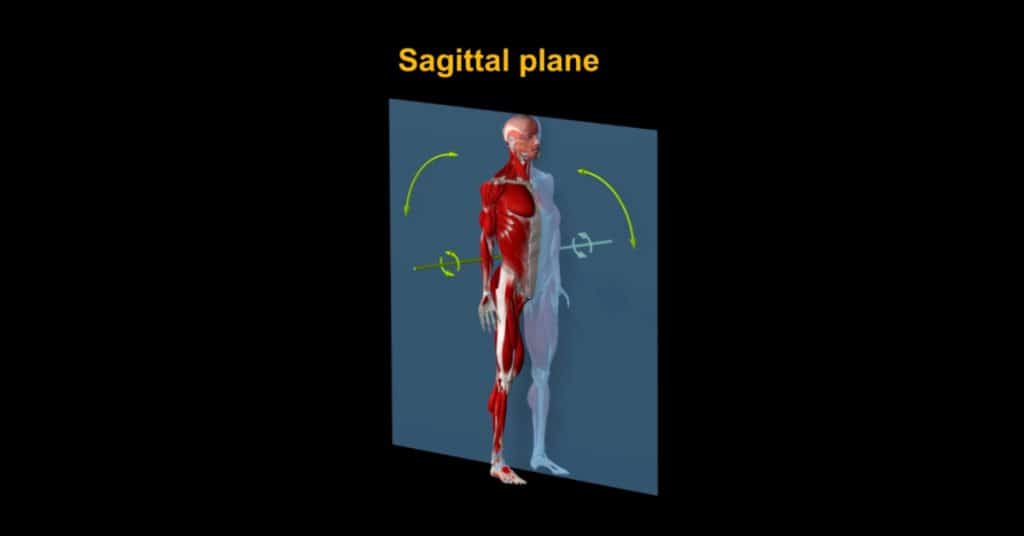
The transverse plane
The transverse or horizontal plane passes through the middle body in a line parallel to the floor, dividing the body into top and bottom parts.
Transverse plane movements are twisting or rotational movements, such as:
- Horizontal abduction and abduction
- Spinal rotation
- Internal and external rotation
- Wrist/ankle – pronation, and supination
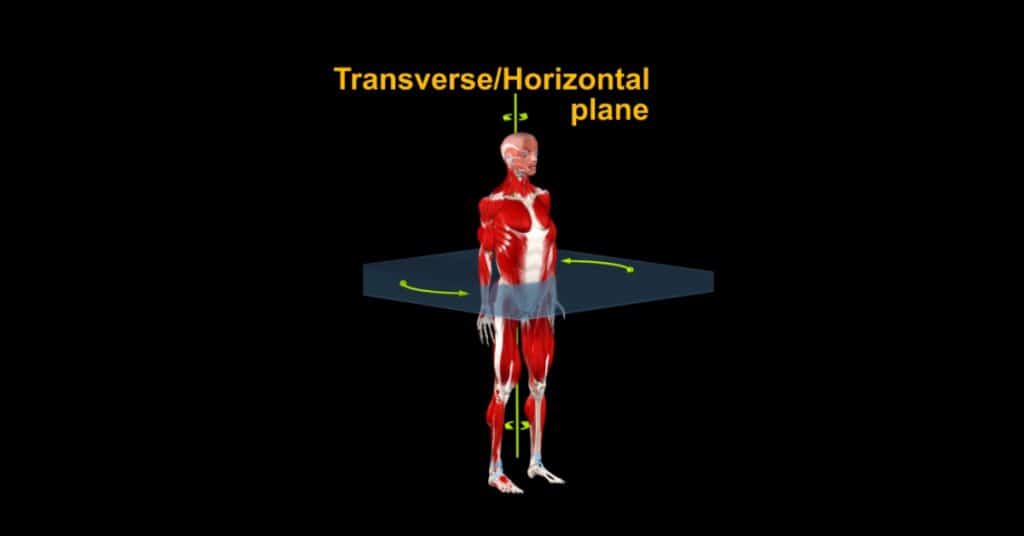
Incorporating the Strength Training App into your fitness journey will take your workouts to the next level.
Download now from any device and sign up for free to try and experience the effectiveness of training smarter and better!
Written by Uriah Turkel, Physical Therapist and Content Creator at Muscle and Motion.
